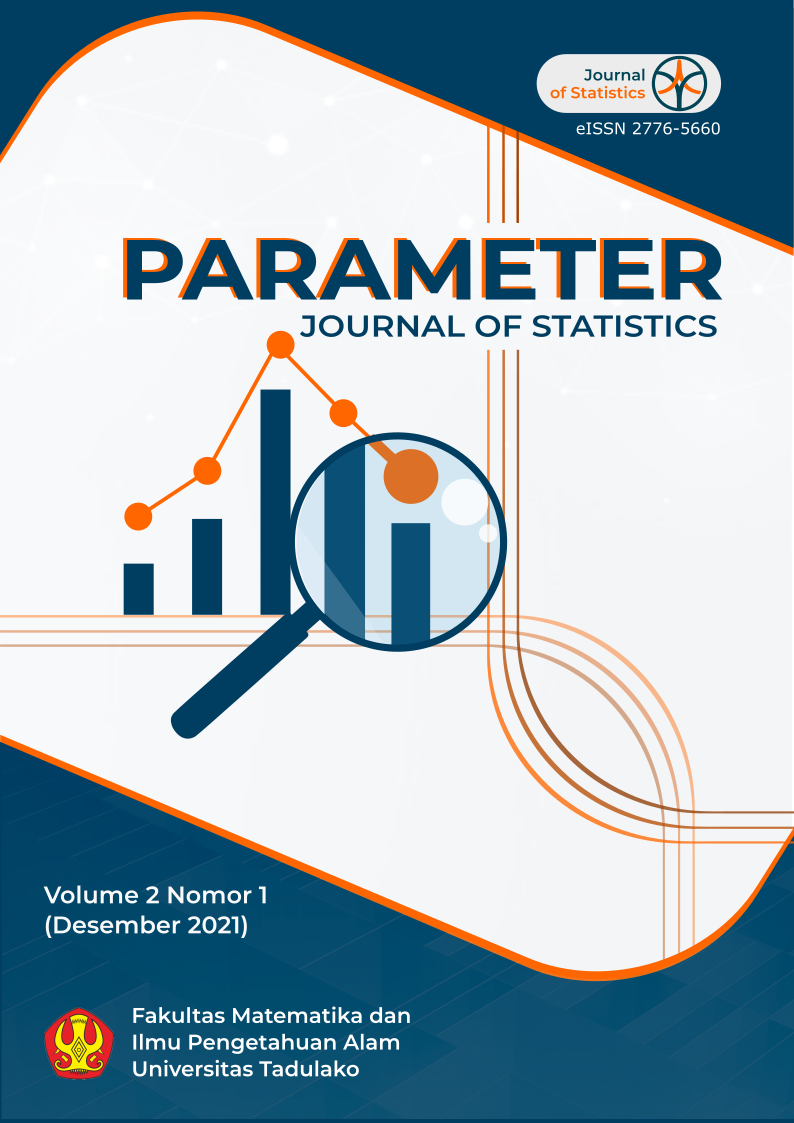Main Article Content
Abstract
Money is a tool that can be used in exchanging goods and services in a certain area. Increasing and decreasing in the money supply excessively can have a negative impact on the economy. For this reason, in order to maintain financial system stability in Indonesia, it is necessary to conduct an analysis of the data on the amount of outflows of rupiah currency at each Bank Indonesia office. In this study, a relationship analysis will be carried out between the eastern region of Indonesia and the amount of outflows of Bank Indonesia banknotes during the 2016-2018 period using circular regression analysis. The results showed that 83.03% of the variation in the amount of outflows of BI banknotes could be explained by the circular regression model that was formed. In addition, in the process of forecasting data on the amount of outflows of BI banknotes in the eastern region of Indonesia for the 2019-2020 period, the time series forecasting method is used which is based on the use of analysis of the relationship pattern between the estimated variables and the time variable.
Keywords
Article Details

This work is licensed under a Creative Commons Attribution-ShareAlike 4.0 International License.
References
- Abuzaid, A., Hussin, A. G., & Rambli, A. (2011). COVRATIO Statistic for Simple Circular Regression Model. Chiang Mai J.Sci, 38(3), 321-330.
- Hidayat, I. (2016). Pendugaan Jumlah Pengunjung Museum di Provinsi DKI Jakarta Menggunakan Regresi Sirkular. Bogor: Institut Pertanian Bogor.
- Jammalamadaka, S. R., & Sarma, Y. R. (1988). A Correlation Coefficient for Angular Variables. In K. Matusita, Statistical Theory and Data Analysis II (pp. 349-364). Amsterdam: Elsevier.
- Jammalamadaka, S. R., & Sengupta, A. (2001). Topics in Circular Statistics (Vol. V). Singapura: World Scientific.
- Kasmir. (2011). Analisis Laporan Keuangan. Jakarta: Raja Grafindo Persada.
- Mardia, K. V., & Sutton, T. W. (1978). A Model for Cylindrical Variables with Applications. The Royal Statistical Society : Series B (Methodological), 40(2), 229-233.
- Maria, J. A., Sedana, I. B., & Artini, L. G. (2017). Pengaruh Tingkat Suku Bunga, Inflansi, dan Pertumbuhan Gross Domestic Product Terhadap Jumlah Uang Beredar di Timor-Leste. E-Jurnal Ekonomi dan Bisnis Universitas Udayana, 6(10), 3477-3514.
- Pemerintah Indonesia. (2007). Undang-Undang Nomor 23 Tahun 1999 tentang Bank Indonesia. Jakarta: Sekretariat Negara.
- Rohazim. (2016). Penerapan Analisis Regresi Sirkular pada Pemodelan Data Iklim. Bogor: Institut Pertanian Bogor.
- Sigalingging, H., Setiawan, E., & Sihaloho, H. D. (2004). Kebijakan Pengedaran Uang di Indonesia. Jakarta: PPSK BI.
